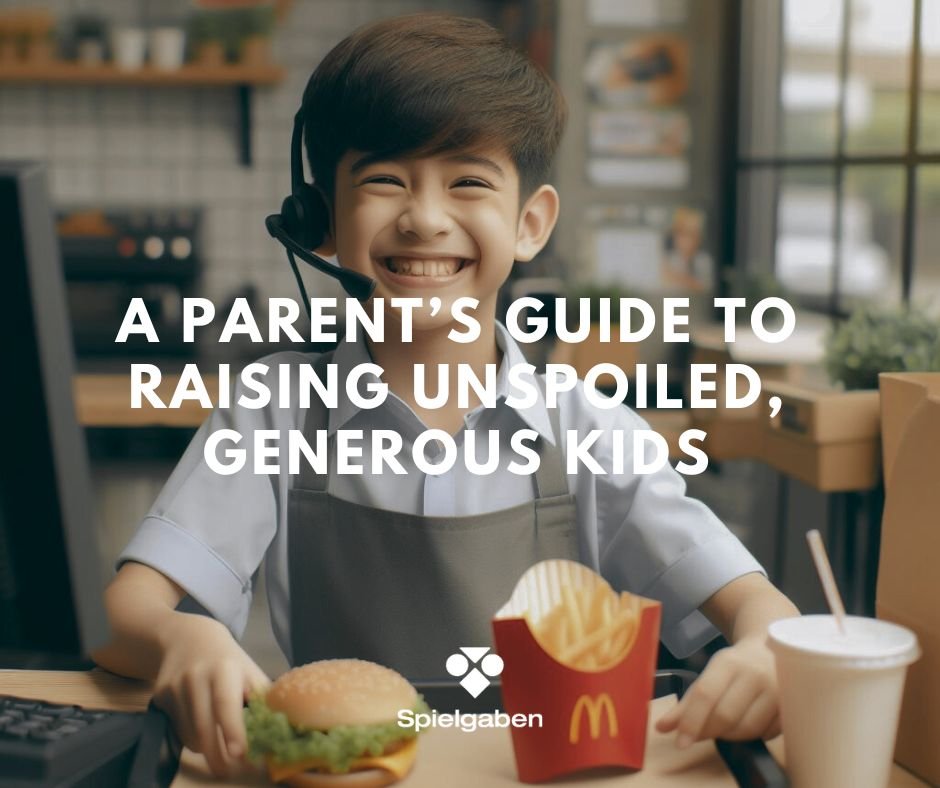Food, Mood, and Your Mini-Me: What Parents Need to Know About Nutrition and the Developing Brain
Introduction: Your Quick Takeaway Guide
Ever wondered why your sweet child turns into a tiny terror after certain foods? Or why focus seems impossible after particular snacks? The connection between your child’s diet and their behavior isn’t just parental folklore—it’s science. This article explores the fascinating gut-brain connection and how it affects your child’s mood, focus, and sleep patterns.
Key Takeaways:
- Your child’s gut microbiome directly influences brain chemistry, affecting everything from mood to concentration
- Specific foods can help manage symptoms of anxiety, depression, and ADHD in children
- Sleep difficulties may be linked to diet choices, with certain foods promoting better rest
- Simple “parent hacks” make incorporating brain-healthy foods practical and kid-friendly
- The B.R.A.I.N. F.O.O.D.S. system offers an easy-to-remember guide for grocery shopping
- Strategies for even the pickiest eaters help transform mealtimes from battlegrounds to opportunities
- Small, consistent changes matter more than dietary perfection
Discover how strategic food choices can potentially reduce meltdowns, improve focus, and bring more peace to your household—all without becoming a nutrition expert or gourmet chef.
As a parent, you’ve witnessed the phenomenon firsthand: your normally sweet-tempered child transforms into a tiny tyrant after a sugar-loaded birthday party. Or perhaps your usually energetic kid becomes mysteriously lethargic after certain meals. These aren’t coincidences—they’re glimpses into the powerful connection between what goes into your child’s stomach and what happens in their developing brain.
The Amazing Gut-Brain Highway
Remember the last time your child had butterflies before a big test or got that “gut feeling” about something?
That’s the gut-brain connection in action! The brain and gut are physically linked by the vagus nerve—essentially a two-way superhighway where chemical messages zoom back and forth constantly.
But here’s where it gets truly fascinating: your child’s gut is home to trillions of bacteria that help produce brain chemicals like dopamine and serotonin—the very same chemicals that regulate mood, focus, and sleep. When little Johnny has a meltdown in the cereal aisle, it might not just be because you said no to the sugary cereal—his gut bacteria might be sending SOS signals straight to his brain!
“Mom, my tummy has butterflies!” “That’s just your gut microbiome texting your brain, honey.”
Food Mood: Depression and Anxiety in Kids
Children aren’t immune to feelings of sadness or worry. While childhood depression and anxiety have many causes, diet plays a surprisingly significant role.
What to Avoid:
- Sugar overload: Those fruit-flavored gummies might buy you 15 minutes of peace, but the crash that follows can tank your child’s mood faster than you can say “bedtime.”
- Artificial everything: Those neon-colored snacks with ingredients you can’t pronounce? They might be contributing to more than just orange fingertips.
- Processed carb avalanche: White bread, white pasta, white rice—these high-GI carbs can cause blood sugar spikes and crashes that affect mood.
Kid-Friendly Mood Boosters:
- Omega-3 fatty acids: Think small fish like sardines (okay, maybe not a kid favorite) but also walnuts, chia seeds sprinkled into smoothies, or omega-3 enriched eggs.
- Colorful fruits and vegetables: Create “rainbow plates” where kids eat something of each color—making it a game can help tremendously.
- Probiotic foods: Yogurt parfaits with berries can be a delicious way to support gut health.
Parent Hack: Try making “monster toast” by using natural food coloring from spinach (green), beets (pink), or turmeric (yellow) mixed into cream cheese spread on whole grain toast. It’s a fun breakfast that sneaks in some brain-healthy ingredients!
When Your Child Can’t Sit Still: ADHD and Diet
If your child has been diagnosed with ADHD—or if they simply have the energy levels of a caffeinated squirrel—what they eat can make a significant difference in their ability to focus.
What Might Make Symptoms Worse:
- Food dyes and preservatives: Studies suggest some children are sensitive to certain artificial colors and preservatives.
- Excessive dairy: Some children with ADHD show improvement when dairy consumption is reduced.
- Gluten: Worth examining, especially if your child also has digestive complaints.
Focus-Friendly Foods:
- Protein-rich breakfasts: Eggs, Greek yogurt, or nut butters can help stabilize blood sugar and improve concentration throughout the morning.
- Berries and dark-colored fruits: These contain polyphenols that may help with focus.
- Complex carbohydrates: Oatmeal, brown rice, and sweet potatoes provide steady energy without the crash.
Parent Hack: Create “focus popsicles” by blending spinach, berries, and a bit of Greek yogurt, then freezing them. They’re perfect for after-school snacks when homework looms!
The Nightmare of Bedtime: Sleep and Diet
If bedtime at your house resembles an Olympic wrestling match, your child’s diet might be partly to blame.
Sleep Stealers:
- Hidden caffeine: It’s not just in coffee—chocolate, some sodas, and even certain medications contain caffeine that can disrupt sleep.
- Sugar before bed: That dessert could be fueling a midnight energy burst.
- Heavy meals close to bedtime: Digestion requires energy, which can keep kids awake.
Sleep Supporters:
- Magnesium-rich foods: Bananas, almonds, and spinach help promote relaxation.
- Tryptophan foods: Turkey, chicken, milk, and eggs contain this sleep-inducing amino acid.
- Melatonin-containing foods: Tart cherries, bananas, and oats naturally contain small amounts of this sleep hormone.
Parent Hack: Create a “sleepy time trail mix” with banana chips, tart cherries, and a few dark chocolate chips (not too many!) for a bedtime snack that supports sleep instead of fighting it.
B.R.A.I.N. F.O.O.D.S: A Cheat Sheet for Busy Parents
When you’re racing through the grocery store with a toddler having a meltdown in the cart and another child playing hide-and-seek in the cereal aisle, remembering nutrition guidelines is nearly impossible. So here’s an easy acronym to keep in mind:
B – Berries and beans (fiber, antioxidants, and stable energy)
R – Rainbow of vegetables and fruits (variety ensures different nutrients)
A – Antioxidant-rich foods (blueberries, dark chocolate, nuts)
I – Include lean proteins (chicken, fish, beans, tofu)
N – Nuts and seeds (healthy fats for brain development)
F – Fish, fiber, and fermented foods (gut health champions)
O – Olive oil and omega-3s (anti-inflammatory powers)
O – Oats and other whole grains (steady energy)
D – Dairy that’s fermented, like yogurt and kefir (probiotic goodness)
S – Spices like turmeric, cinnamon, and saffron (brain boosters)
Real-Life Strategies for Reluctant Eaters
Let’s be honest—knowing what your child should eat and getting them to actually eat it are two entirely different challenges. Here are some battlefield-tested approaches:
1. The Stealth Health Approach
- Vegetable smuggling operations: Blend spinach into smoothies, grate zucchini into meatballs, puree cauliflower into mac and cheese.
- Rename foods: “Dinosaur trees” (broccoli) and “power balls” (blueberries) suddenly become more appealing.
- The dip solution: Many vegetable standoffs can be resolved with hummus or yogurt-based dips.
2. The Involvement Strategy
- Garden helpers: Children are more likely to eat vegetables they’ve helped grow.
- Kitchen assistants: Even young children can tear lettuce, rinse berries, or help measure ingredients.
- Shopping buddies: Let them choose one new fruit or vegetable each shopping trip to try.
3. The Patience Plan
- Exposure therapy: It can take 15-20 exposures before a child accepts a new food.
- No pressure zone: The more you push, the more they resist. Offer but don’t force.
- Lead by example: Children are watching what you eat, even when you think they’re not.
When Things Go Off the Rails
Despite your best intentions, there will be days when your child subsists on nothing but goldfish crackers and apple juice. There will be birthday parties with fluorescent cupcakes and weekends with grandparents who believe sugar is one of the essential food groups.
This is normal. The goal isn’t perfection—it’s progress. One cupcake won’t derail your child’s brain development, just as one salmon dinner won’t guarantee academic excellence.
Parent Hack: Adopt the 80/20 rule. Aim for healthy choices 80% of the time, and let the other 20% be flexible for special occasions, treats, and those days when survival mode is all you can manage.
The Takeaway: Small Changes, Big Impact
You don’t need to overhaul your entire kitchen overnight or become a gourmet chef specializing in obscure superfoods. Start with one small change each week:
- Swap white bread for whole grain
- Add one extra vegetable to dinner
- Replace sugary drinks with water infused with fruit
- Try one new brain-boosting food as a family
Remember that food is not just fuel—it’s information for your child’s developing brain. Every bite sends chemical messengers racing through their body, influencing everything from their mood to their ability to focus and sleep.
So the next time your little one is having a rough day, consider what’s on their plate. The solution to behavioral challenges might not just be in time-outs or reward charts—it might be in the refrigerator.
After all, we’re not just feeding our children’s bodies; we’re nourishing their brains, one bite at a time.













LEAVE A COMMENT